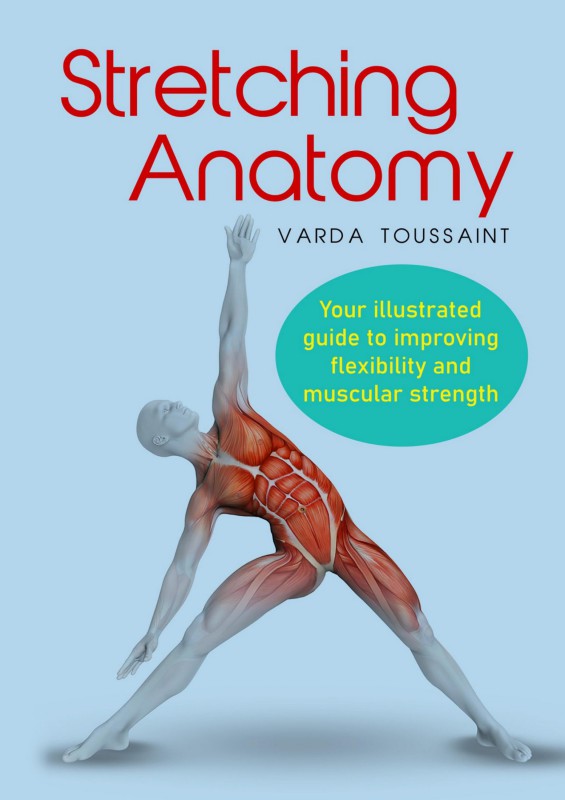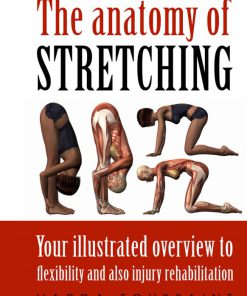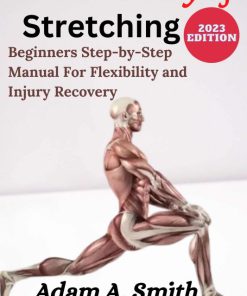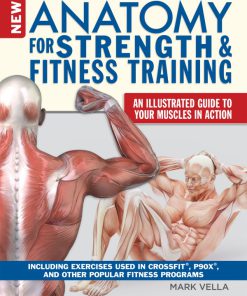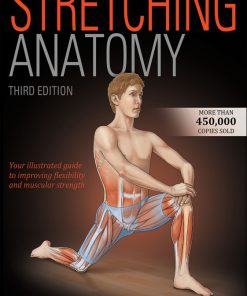Stretching Anatomy Your Illustrated Guide To Improving Flexibility And Muscular Strength 1st edition by Arnold Nelson ISBN B006DNFD5K 978-1450409757
$50.00 Original price was: $50.00.$25.00Current price is: $25.00.
Authors:Toussaint, Varda , Series:Anatomy [305] , Author sort:Toussaint, Varda , Languages:Languages:eng , Published:Published:Mar 2022 , Publisher:UNKNOWN
Stretching Anatomy : Your Illustrated Guide To Improving Flexibility And Muscular Strength 1st edition by Arnold Nelson – Ebook PDF Instant Download/Delivery. B006DNFD5K 978-1450409757
Full download Stretching Anatomy : Your Illustrated Guide To Improving Flexibility And Muscular Strength 1st edition after payment

Product details:
ISBN 10: B006DNFD5K
ISBN 13: 978-1450409757
Author: Arnold Nelson
See inside every stretch as you increase flexibility and improve muscular strength. Expanded, enhanced, and updated, the best-selling “Stretching Anatomy” returns to show you how to increase range of motion, supplement training, enhance recovery, and maximize efficiency of movement. You’ll also gain a detailed understanding of how each stretch affects your body.”Stretching Anatomy, Second Edition,” is like having an X-ray of each stretch, only better. Not only do you see full-color illustrations of the muscles in action, but you also see how a change in position can alter the muscle emphasis and difficulty and how variations can improve safety and effectiveness. A new Stretch Focus section details the procedure and benefits of every exercise as well as safety considerations and variations according to skill level.Each exercise describes how to stretch, when to stretch, primary and secondary muscle emphasis, and which muscles are activated for support. Stretching programs provide three levels of difficulty, including light stretching that can be used to aid in recovery from soreness and injury. A new chapter on dynamic stretches covers the most effective exercises for athletic warm-ups, while another chapter shows you how to customize a program based on your individual needs, including a program of passive static stretches proven to help lower blood glucose.Whether you seek increased flexibility, better athletic performance, or reduced muscle soreness and tension, “Stretching Anatomy” is your visual guide to proper stretching technique.
Stretching Anatomy : Your Illustrated Guide To Improving Flexibility And Muscular Strength 1st Table of contents:
-
Introduction to Stretching and Flexibility
1.1. The Importance of Flexibility
1.2. Benefits of Stretching for Muscular Strength
1.3. Understanding the Anatomy of Flexibility
1.4. How Stretching Affects the Muscles -
Chapter 1: The Science of Stretching
2.1. How Muscles and Tendons Stretch
2.2. Types of Stretching Techniques
2.3. The Role of the Nervous System in Stretching
2.4. Common Myths About Stretching -
Chapter 2: Anatomy of Flexibility
3.1. Muscle and Joint Structures
3.2. Range of Motion and its Importance
3.3. Flexibility and Posture
3.4. How Tight Muscles Affect Movement -
Chapter 3: Dynamic Stretching Techniques
4.1. What is Dynamic Stretching?
4.2. Best Practices for Dynamic Stretching
4.3. Dynamic Stretches for Warm-Up
4.4. Examples of Dynamic Stretches -
Chapter 4: Static Stretching Techniques
5.1. What is Static Stretching?
5.2. How to Perform Static Stretches Safely
5.3. Static Stretches for Flexibility
5.4. Targeting Major Muscle Groups -
Chapter 5: Stretching for Strength Training
6.1. Stretching to Improve Strength and Performance
6.2. How Stretching Can Prevent Injuries in Strength Training
6.3. Stretching Post-Workout for Muscle Recovery
6.4. Stretching During Weightlifting Routines -
Chapter 6: Stretching for Specific Muscle Groups
7.1. Upper Body Stretching: Neck, Shoulders, Arms
7.2. Lower Body Stretching: Hips, Glutes, Hamstrings
7.3. Core and Back Stretching
7.4. Stretching for Flexibility and Mobility in Joints -
Chapter 7: Advanced Stretching Techniques
8.1. Proprioceptive Neuromuscular Facilitation (PNF)
8.2. Active Stretching
8.3. Stretching and Yoga Integration
8.4. Advanced Flexibility Training -
Chapter 8: Stretching for Sports and Athletic Performance
9.1. Stretching for Endurance Athletes
9.2. Stretching for Power and Speed
9.3. Stretching to Improve Agility and Flexibility
9.4. Sport-Specific Stretching Routines -
Chapter 9: The Role of Stretching in Injury Prevention
10.1. Stretching to Prevent Common Injuries
10.2. How to Address Tightness and Muscle Imbalance
10.3. Stretching for Rehabilitation After Injury
10.4. Creating an Injury Prevention Stretching Program -
Chapter 10: Building a Stretching Routine
11.1. How to Design a Stretching Routine for Flexibility and Strength
11.2. Stretching for Different Fitness Levels
11.3. Stretching Programs for Beginners, Intermediate, and Advanced
11.4. Staying Consistent with Your Stretching Practice -
Conclusion: Flexibility for Life
12.1. The Long-Term Benefits of Stretching
12.2. Flexibility as Part of a Balanced Fitness Routine
12.3. Final Tips for Effective Stretching
12.4. Staying Safe and Avoiding Injury During Stretching
People also search for Stretching Anatomy : Your Illustrated Guide To Improving Flexibility And Muscular Strength 1st :
delavier’s stretching anatomy
frederic delavier stretching anatomy pdf
delavier’s stretching anatomy pdf
frederic delavier stretching anatomy
muscle stretching anatomy
You may also like…
eBook EPUB
Stretching Anatomy 3rd Edition by Arnold Nelson, Jouko Kokkonen ISBN 1492593656 9781492593652

